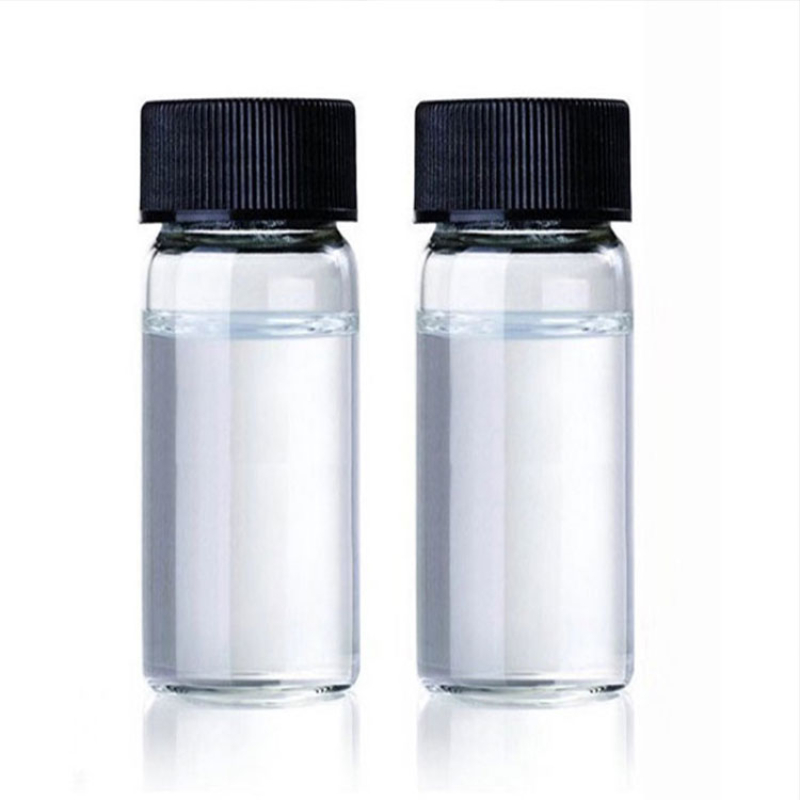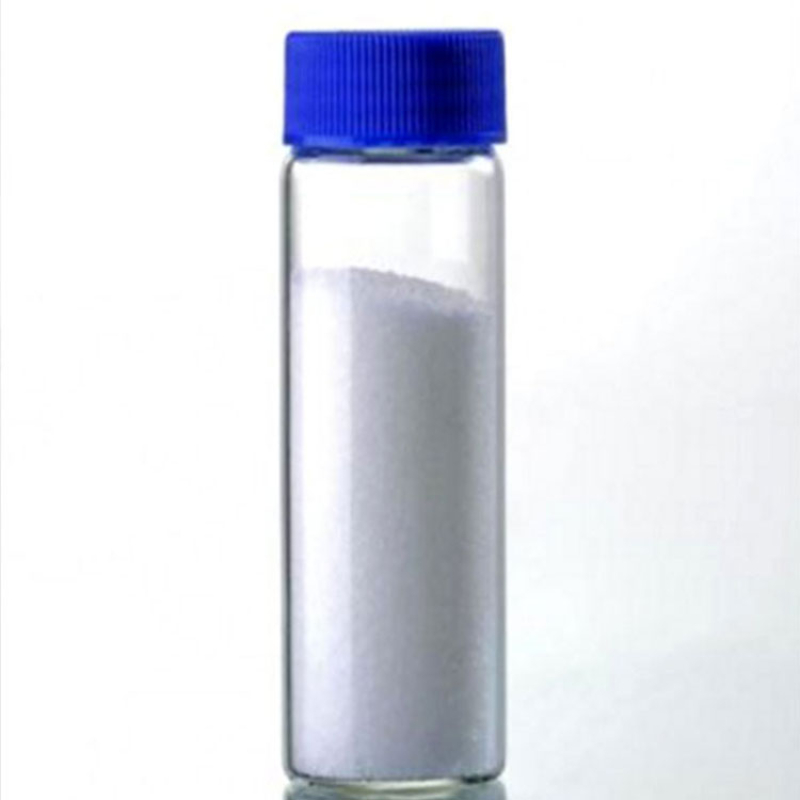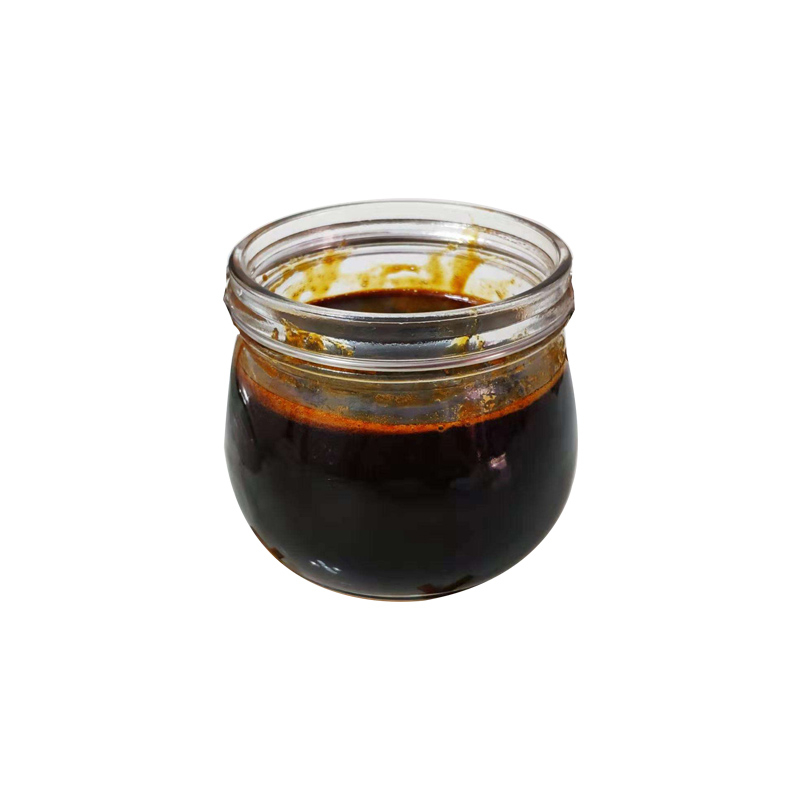Products Description of Tetrahydropyran CAS#142-68-7Tetrahydropyran, also known as oxadiazine, is a six-membered oxygen-containing saturated heterocyclic ring. It is a colorless, flammable liquid at room temperature with a special smell. It is miscible in water, ethanol, ether, and other organic solvents. It generates explosive organic peroxides under light. It is prepared by hydrogenation of dihydropyran in the presence of Raney nickel or reaction of 5-dibromopentane and water in the presence of zinc oxide.
Contact Now
Products Description of SuccinonitrileCAS#110-61-2White waxy crystals. Melting point 54-56℃, boiling point 265-267℃, 185℃ (8.0kPa), 158-160℃ (2.67kPa), relative density (60/4℃) 0.985, refractive index (nD60) 1.41734 (liquid), flash point 110℃. Soluble in acetone, chloroform, dioxane, slightly soluble in water, ethanol, ether, carbon disulfide and benzene.
Contact Now
Products Description of 3-Chloro-6-methylpyridazine CAS#1121-79-53-Chloro-6-methylpyridazine is a heterocyclic compound and chemical raw material. It has a low melting point and boiling point, and is usually light yellow to light beige in powder form.
Contact Now
Products Description of Boron Trifluoride Diethyl Etherate CAS#109-63-7Boron trifluoride is an important Lewis acid catalyst in organic synthesis and plays an important role in organic reactions (such as polymerization, hydrocarbonization, alkylation, isomerization, etc.). It is inconvenient to use trifluoride when it is in gaseous state. In order to adapt to the activity requirements of different reactions, according to the characteristics of trifluoride, it is often combined with polar oxygen- or nitrogen-containing compounds to convert it into a complex with strong stability.
Contact Now
Products Description of 1,1,3,3-Tetramethoxypropane CAS#102-52-3The ester compounds synthesized based on 1,1,3,3-tetramethoxypropane have ester-forming quaternary carbon atoms at the β position of the molecular structure of 1,1,3,3-tetramethoxypropane.
Contact Now
Products Description of Monoethanolamine CAS#141-43-52-Hydroxyethylamine, also known as ethanolamine, is an organic compound with the chemical formula C2H7NO.Monoethanolamine Chemical PropertiesMelting point 10-11 °C(lit.)Boiling point 170 °C(lit.)density 1.012 g/mL at 25 °C(lit.)vapor density 2.1 (vs air)vapor pressure 0.2 mm Hg ( 20 °C)refractive index n20/D 1.454(lit.)Fp 200 °Fstorage temp. Store at +15°C to +25°C.solubility Soluble in benzene, ether, carbon tetrachloride.pka9.5(at 25℃)form Liquidcolor
Contact Now
Products Description of 2,2'-Azobis(2-methylpropionitrile) CAS#78-67-1White columnar crystals or white powdery crystals.
Contact Now
Products Description of Coconut oil CAS#8001-31-8Coconut oil is an oil extracted from coconut pulp (dry pulp contains about 63% to 70% oil). It is a white semi-solid lard-like fat. It has a unique coconut fragrance. The main components are glycerides of lauric acid, myristic acid, and oleic acid. The melting point is 23 to 28°C. The relative density is 0.917 to 0.919 (25/25°C). The saponification value is 250 to 264. The iodine value is 8 to 12. The acid value does not exceed 6. It is soluble in alcohol, chloroform, ether, and carbon disulfide, but insoluble in water.
Contact Now
Products Description of Glyoxal CAS#107-22-2Glyoxal is an organic compound with the chemical formula OCHCHO, which is composed of two aldehyde groups -C=O-H.
Contact Now
Ethylene Glycol Diacetate CAS#111-55-7Ethylene Glycol Diacetate, additionally recognized as ethylene glycol diacetate, has a chemical shape containing an ethylene glycol (1,2-ethanol) skeleton, with an acetate crew (-O-C (=O)-CH₃) linked to every of the two hydroxyl positions of ethylene glycol.It is normally a colorless, obvious liquid, from time to time barely yellowish.
Contact Now
Products Description of Direct Pigment Yellow 42 CAS#51274-00-1Barium sulfate has its chemical formula BaSO4. It is colorless or white orthorhombic crystals with relative molecular mass of 233.4, the relative density of 4.5 (15 ℃), the melting point of 1580 ℃, and the Refractive index of 1.637. Upon being heated to 1149 ℃, it will become monoclinic crystalline when the refractive index is 1.649. It is almost insoluble in water with the solubility being 0.00022 at 18 ℃ and 0.0041 at 100 ℃.
Contact Now
Products Description of diisooctyl 2,2'-[(dioctylstannylene)bis(thio)]diacetateCAS#26401-97-8Mainly used in PVC products that come into contact with food and medicine, such as plates, sheets, films, etc., and can be used in processes such as calendering, blow molding, extrusion, injection, etc.diisooctyl 2,2'-[(dioctylstannylene)bis(thio)]diacetate Chemical Propertiesdensity 1.08[at 20℃]vapor pressure 0Pa at 25℃storage temp. Refrigerator, under inert atmospheresolubility Chloroform (Slightly), Ethyl Acetate (Slightly)form Oilcolor ColourlessWater Solu
Contact Now
Products Description of Glyceryl monostearate CAS#31566-31-1 Glyceryl monostearate is an emulsifier and additive for food; it is used as an emulsifier in cosmetics and pharmaceutical ointments.
Contact Now
Products Description of Antioxidant 1330 CAS#1709-70-2Hindered phenol antioxidant 330 is a white crystalline powder with a melting point above 244°C. It is insoluble in water. Its solubility in some solutions at 18°C (g/100g solvent) is: benzene 20, dichloromethane 31.9, methylcyclohexane 1.7, methanol 0.2, isopropanol 0.1.
Contact Now
Products Description of Amoxicillin CAS#26787-78-0Amoxicillin, also known as amoxicillin or anmercillin, is one of the most commonly used broad-spectrum β-lactam antibiotics of the penicillin class. It is a white powder with a half-life of about 61.3 minutes. It is stable under acidic conditions, with a gastrointestinal absorption rate of 90%. It has strong bactericidal effects and the ability to penetrate cell membranes. It is also one of the semi-synthetic penicillins that are currently widely used in clinical practice.
Contact Now
Products Description of Ethyl butylacetylaminopropionate CAS#52304-36-6Mosquito repellent, also known as ethyl butyl acetylaminopropionate, BAAPE, IR3535, and Imonin, is a plasticizer and a broad-spectrum, highly effective, low-toxic insect repellent.Ethyl butylacetylaminopropionate Chemical PropertiesMelting point <-20°Boiling point bp0.2 108-110°; bp0.5 126-127°density 0.987±0.06 g/cm3(Predicted)refractive index nD20 1.452-1.455Fp 318°F (159°C)storage temp. Sealed in dry,Room Temperaturesolubility Acetonitrile (Slightly), Chloroform (Slightly), Ethy
Contact Now
Products Description of Diethylamino hydroxybenzoyl hexyl benzoate CAS#302776-68-7Diethylamino hydroxybenzoyl hexyl benzoate is an organic peroxide with strong oxidizing effect. It is easy to produce highly active free radicals during thermal decomposition. It is thermally unstable and may decompose at relatively low temperatures. During the decomposition process of diethylamino hydroxybenzoyl hexyl benzoate, a large amount of heat and gas is released, which increases the temperature and accelerates the decomposition.
Contact Now
Products Description of Dioctyl terephthalate CAS#6422-86-2Dioctyl terephthalate (DOTP) is a high-performance main plasticizer for polyvinyl chloride (PVC) plastics. Compared with the commonly used diisooctyl phthalate (DOP), it has the advantages of heat resistance, cold resistance, low volatility, anti-extraction, flexibility and good electrical insulation performance. It shows excellent durability, soap water resistance and low-temperature flexibility in the products.
Contact Now
Products Description of Sodium hydrosulfideCAS#16721-80-5Sodium hydrosulfide is used in the dye industry to synthesize organic intermediates and as an auxiliary agent for preparing sulfur dyes, in the leather industry to dehair and tan leather, in the fertilizer industry to remove monomer sulfur in activated carbon desulfurizers, in the mining industry to be used in large quantities for copper ore dressing, in the production of artificial fibers for sulfite dyeing, etc.
Contact Now
Glycerin For Skin CAS#56-81-5 discover the power of Glycerin (CAS#56-81-5), also known as vegetable glycerine or liquid glycerol, a key component in a wide array of industries.
Contact Now
Products Description of 2,4,5-Trichloropyrimidine CAS#5750-76-52,4,5-Trichloropyrimidine is a new type of reactive dye intermediate raw material and a synthetic raw material for new antibacterial and anti-inflammatory chemical drugs. With the continuous increase in sales of new reactive dyes and new antibacterial and anti-inflammatory drugs, the demand for the raw material 2,4,5-Trichloropyrimidine required for its synthesis is also growing. Therefore, it is particularly urgent to study its synthesis and develop a green new process suitable for industrial mass production.
Contact Now
Products Description of ICHTHOSULFONATE CAS#8029-68-3Ichthyol is a disinfectant and antiseptic drug. It is mainly used for furunculosis in clinical practice. It can also be used for phlebitis and combined with antibiotic ointment to treat early blepharitis. Ichthyol ointment has an anti-inflammatory effect, so it can be applied externally to treat folliculitis.
Contact Now
Products Description of Chromium(III) fluoride CAS#7788-97-8Chromium trifluoride, also known as chromium trifluoride, is an inorganic compound with the chemical formula CrF3. It is mainly used as a mothproofing agent for wool fabrics, a halogenation catalyst, a marble hardener and a colorant.On October 27, 2017, the World Health Organization's International Agency for Research on Cancer published a preliminary list of carcinogens for reference.
Contact Now
Products Description of (2-Bromoethyl)benzene CAS#103-63-9β-Bromophenylethane is an important intermediate for the synthesis of highly efficient brominated flame retardant polybrominated styrene, and is also commonly used in the preparation of organic synthesis intermediates. For example, β-Bromophenylethane can be used to prepare 4-(4-phenylbutoxy)benzoic acid, an intermediate for preparing pranlukast. Pranlukast was first successfully developed by Ono Co., Ltd. of Japan as an anti-asthma drug and was launched in Japan in 1995.
Contact Now













![diisooctyl 2,2'-[(dioctylstannylene)bis(thio)]diacetateCAS#26401-97-8](https://d3rnfhc14zcmdf.cloudfront.net/cdn/ff/MEIXbra4wyUKJKW67w9UkqzwQzIZQBAtmtXt1eQRqFc/1718820022/public/styles/chanpinzhutu/public/2024-06/%E6%97%A0%E8%89%B2%E6%B6%B2%E4%BD%93%20%283%29%20-%20%E5%89%AF%E6%9C%AC_41.jpg?itok=btFpy9ph)




















